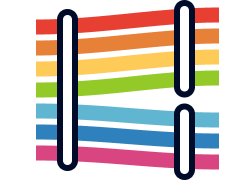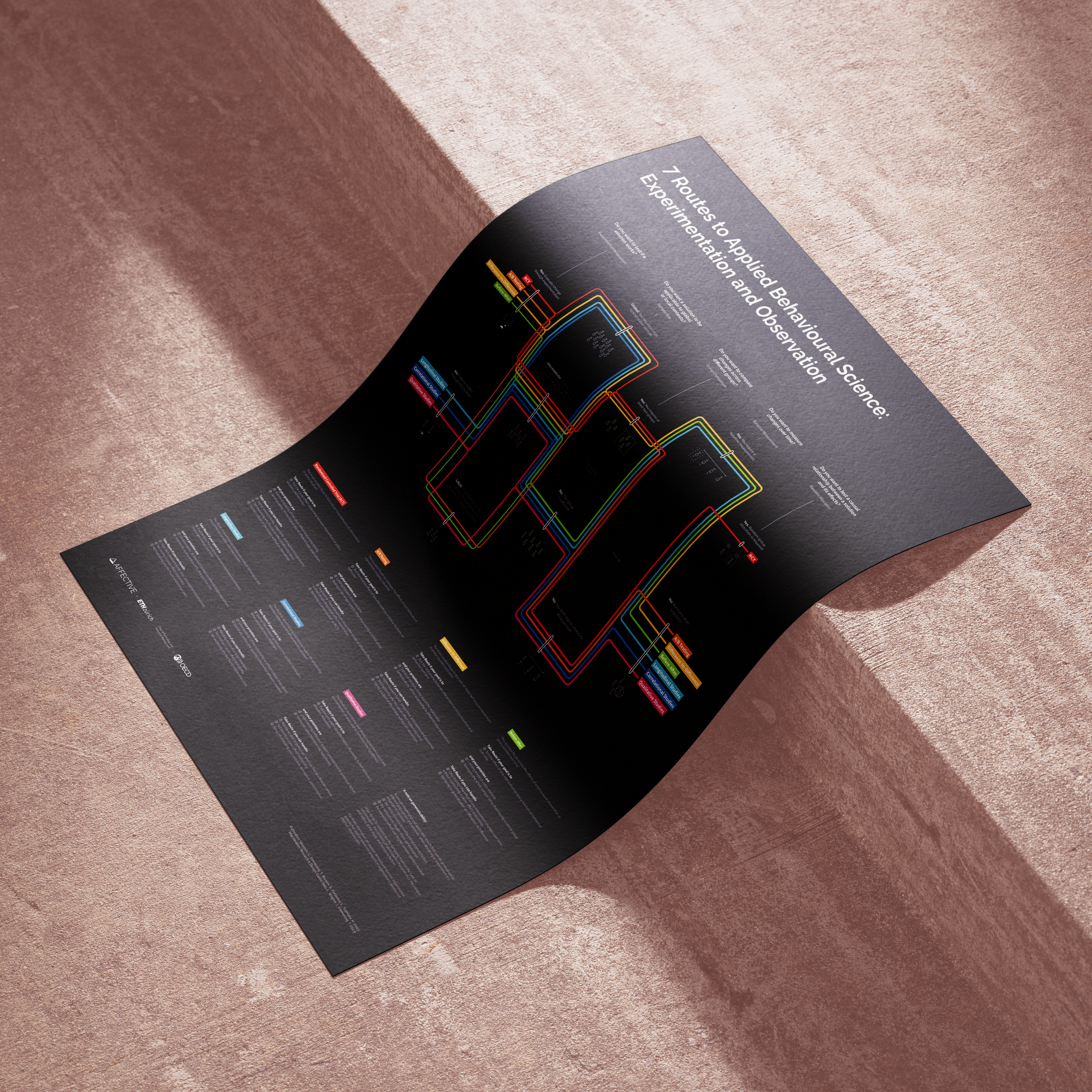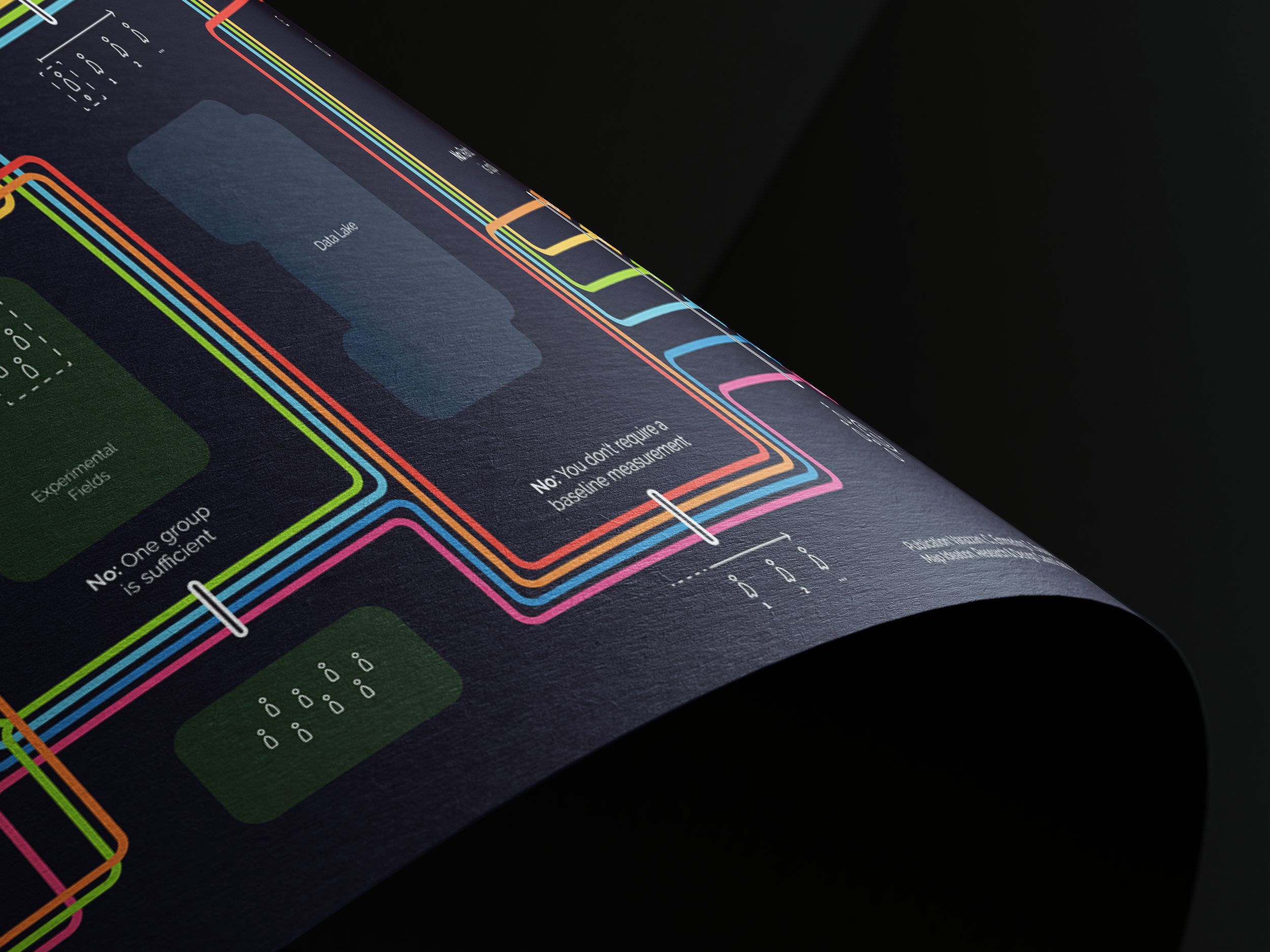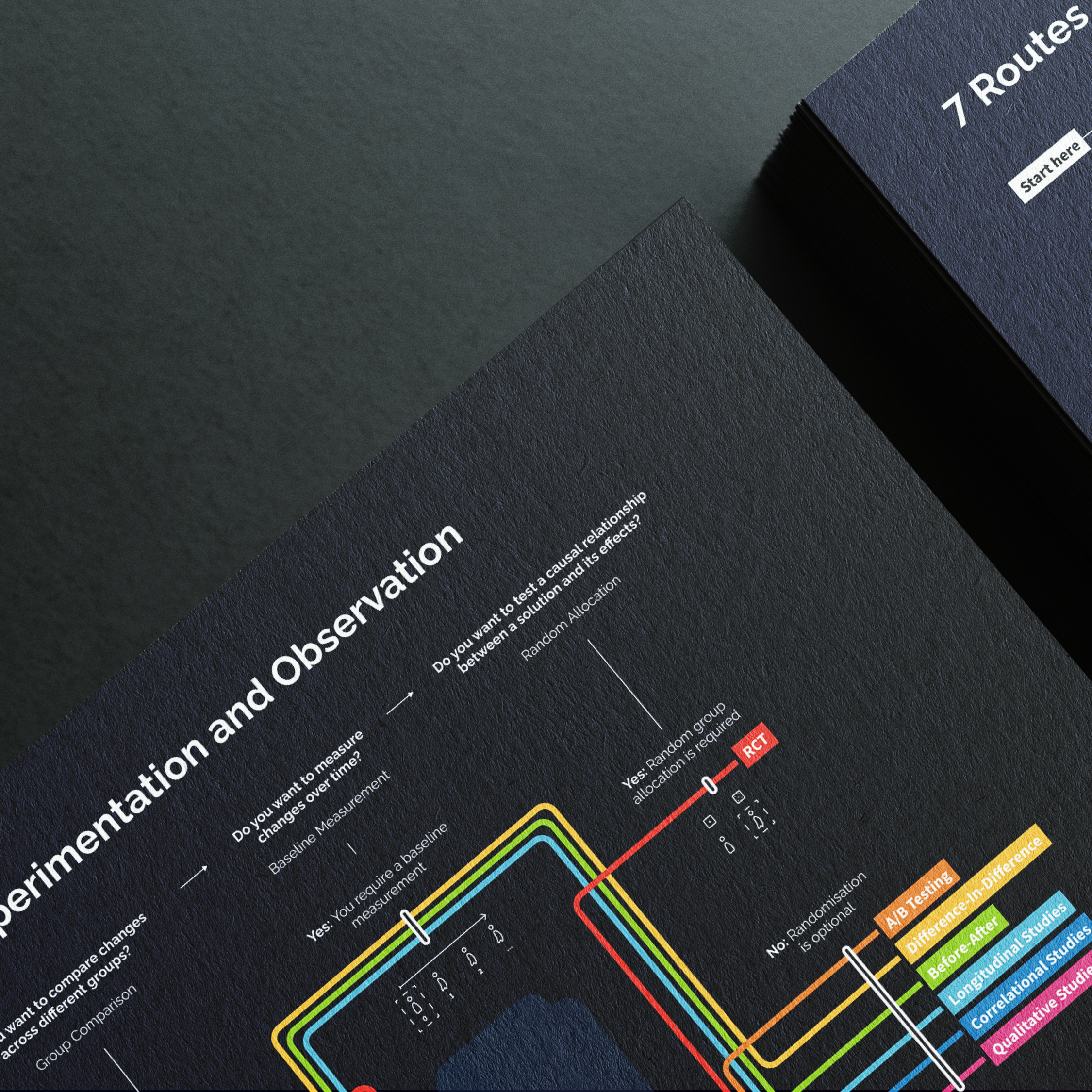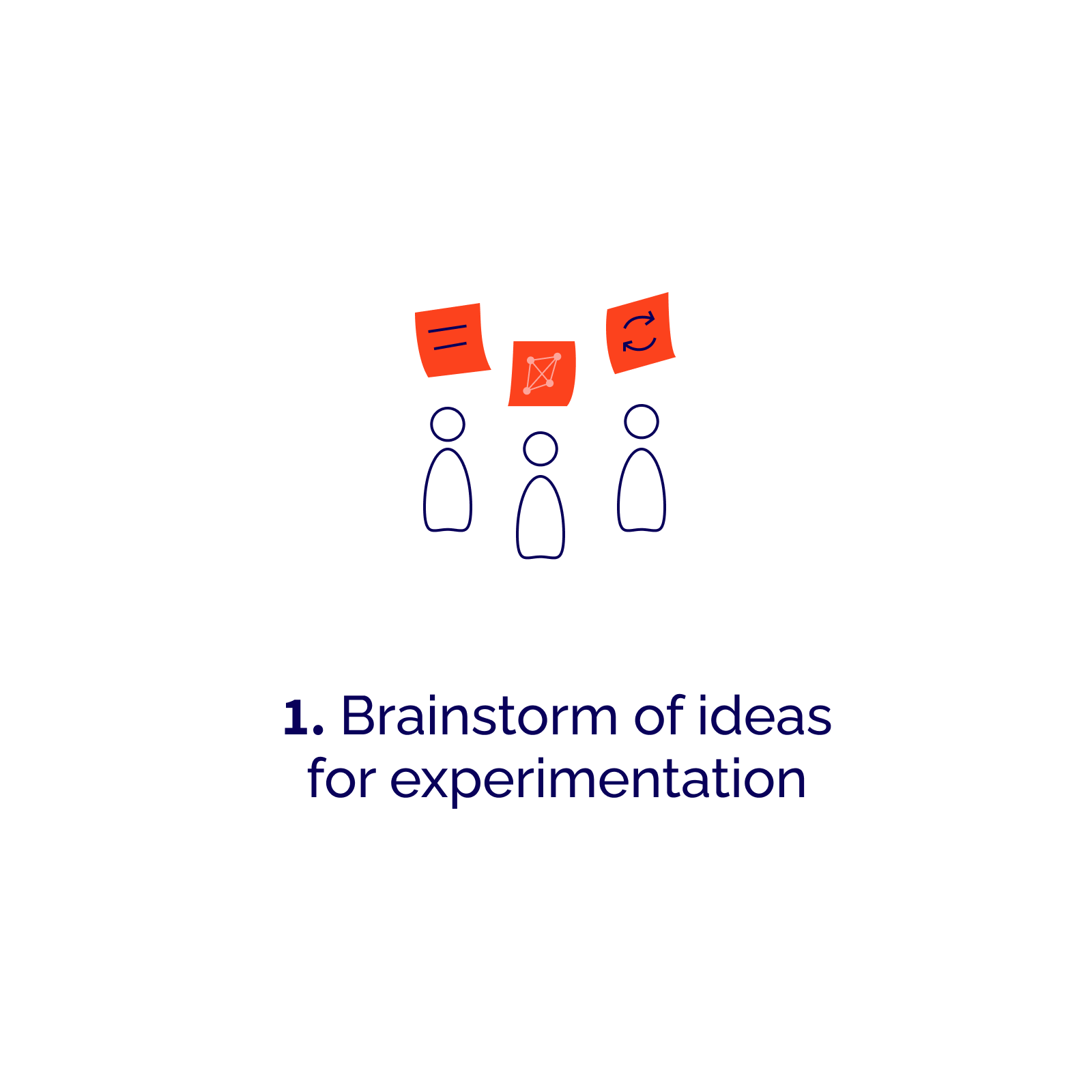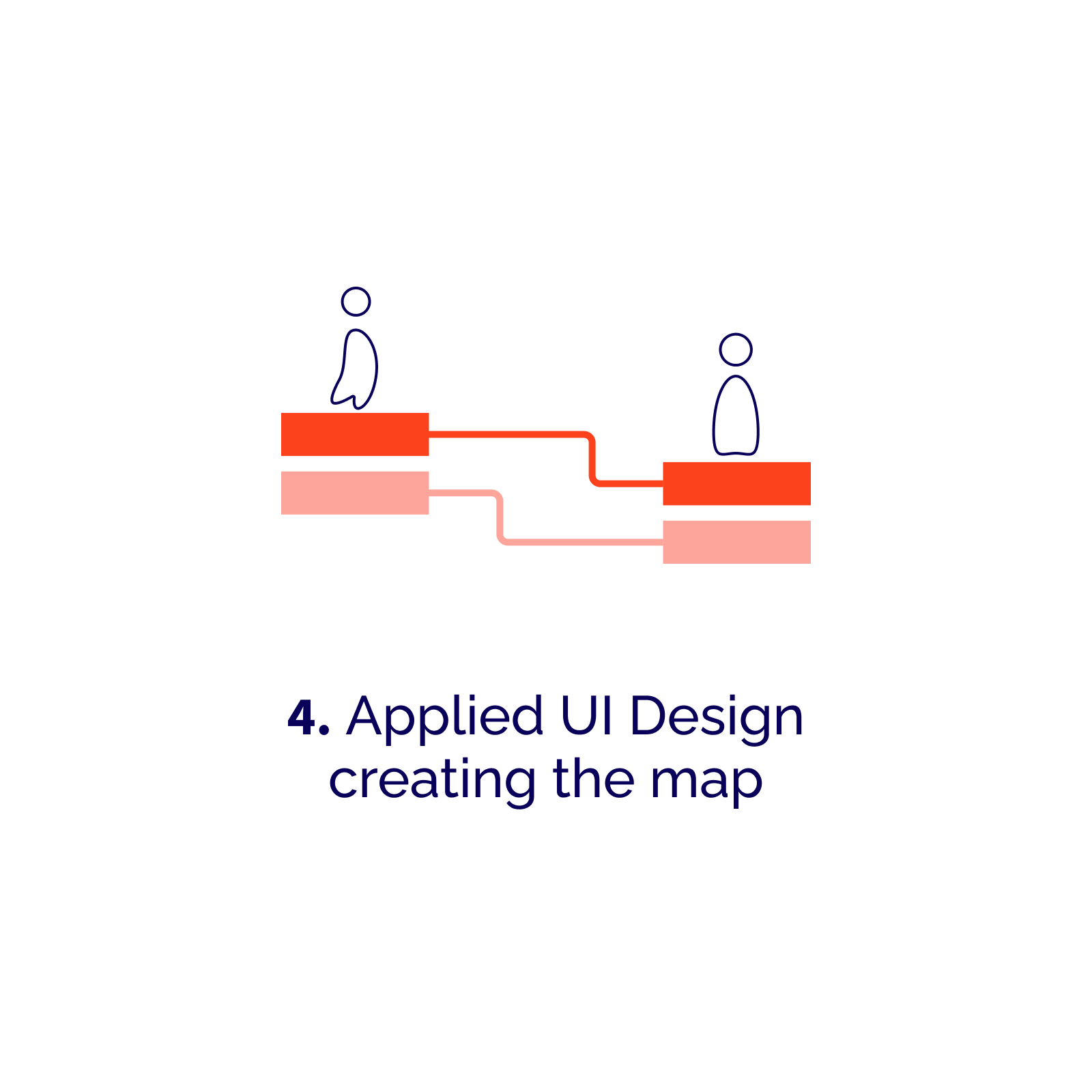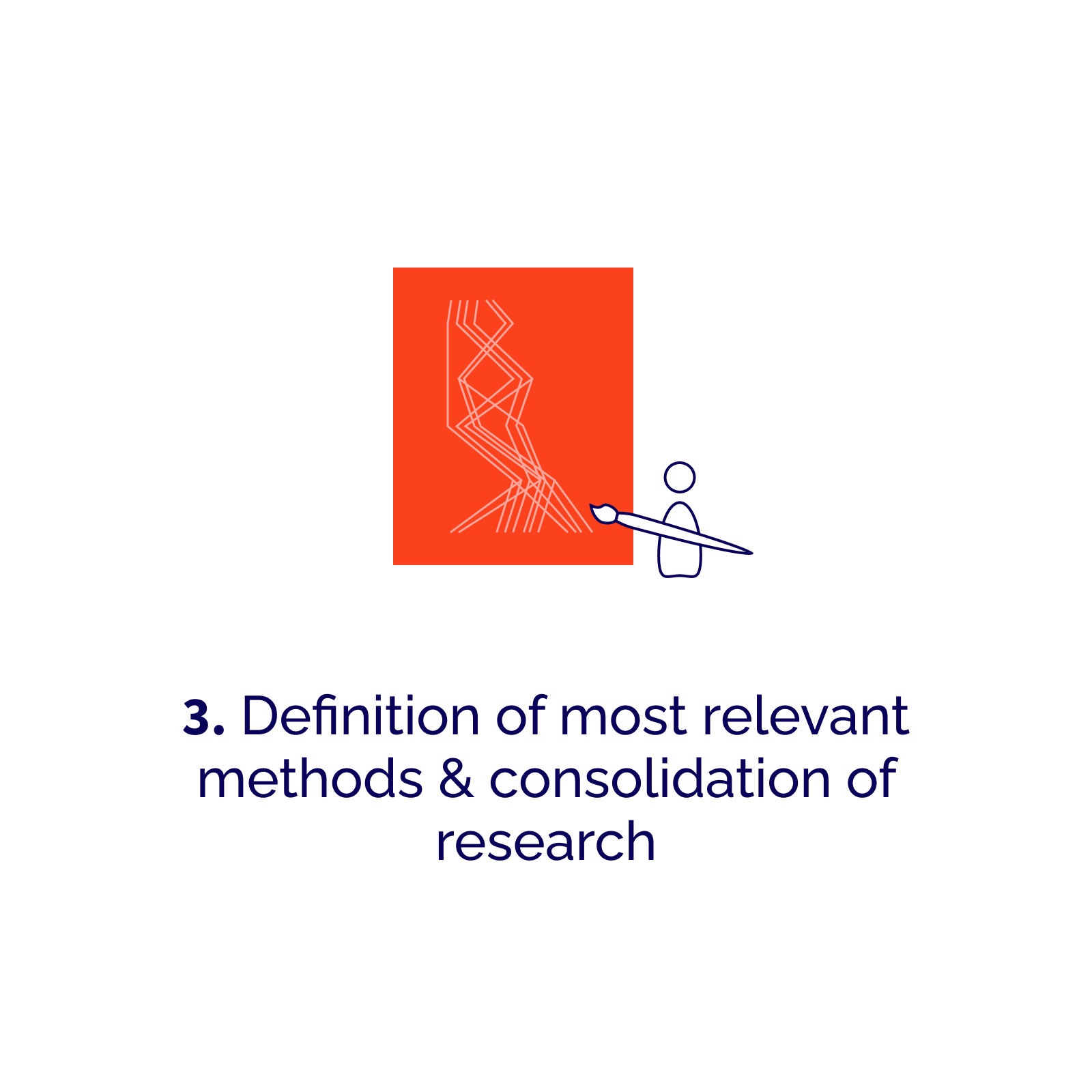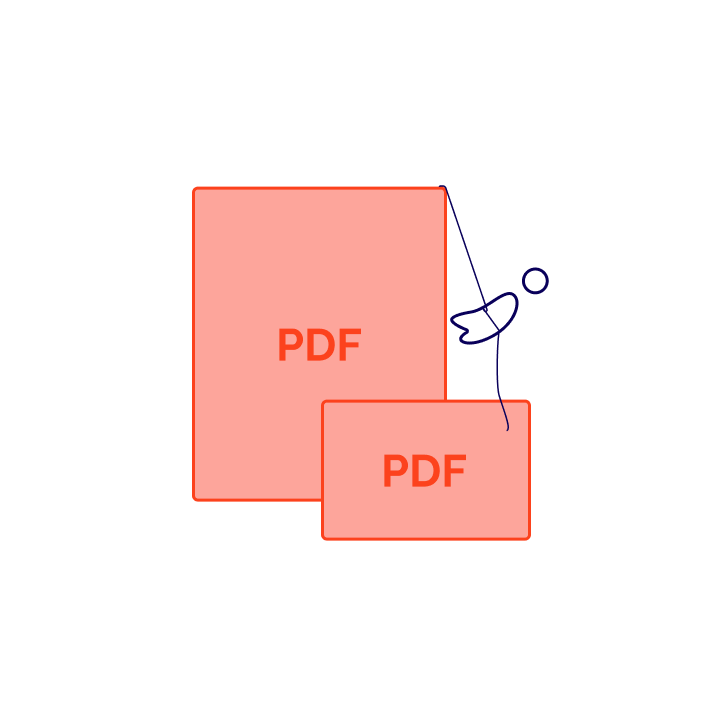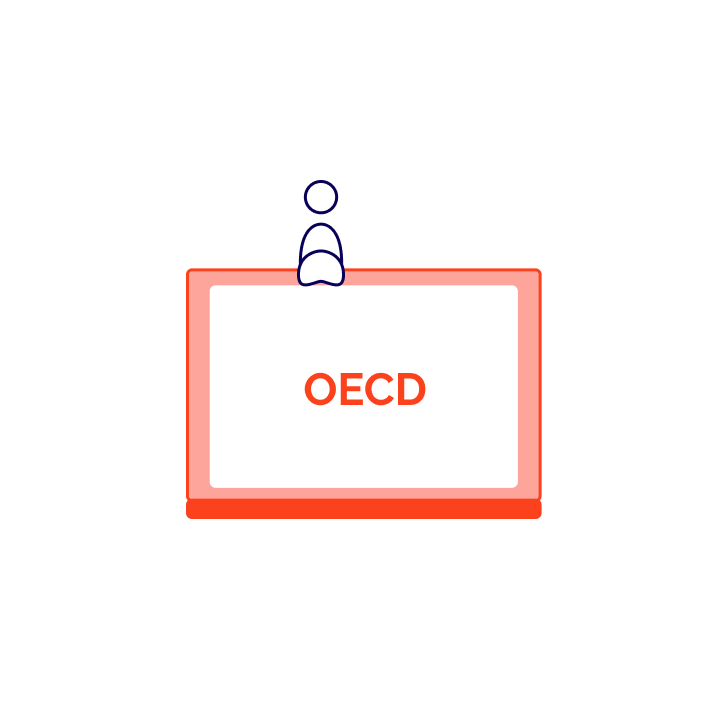Welcome to the
7 Routes to Applied Behavioural Science Experimentation and Observation
The seven routes offers a user-friendly and concise overview of different experimental methods used in applied behavioural science in the visual reference of a map.
The map is designed to guide you through the method selection process, saving time and energy whilst allowing you to proceed confidently.
Simplifying Complexity
It can be challenging to identify the most suitable method for your specific research goals, priorities, and limitations.
The map serves as an innovative framework, displaying seven routes to experimentation and observation. It helps you to understand different experimental methods in an easy and fun way.
Easy language
The map is designed for everyone who does not need complex and in-depth descriptions of experimental methods. It is designed for practitioners and uses straight-forward language to explain the most important elements.
Comprehensive Background
The framework was integrated and elaborated further into a comprehensive policy paper, written in collaboration between the OECD’s Public Governance (GOV) Directorate, Affective Advisory, and the Chair of Technology and Innovation Management at ETH Zürich.
How to use the map
The map presents different methods as "metro lines", each with its characteristics, priorities and limitations. The "metro stations" represent five lead questions, helping you to navigate your options and support you in confidently choosing the right method.
Case 1
You have yet to decide which experimental method to use.
Step 1
Start at the top left of the map and answer the five key questions (the 5 metro stations on the map) in order. The questions go from general to more specific and will help you narrow down the most appropriate method (one of the 7 metro lines on the map).
Step 2
Select the most appropriate method by looking at the answers you have given to the questions (metro stops you want to go to).
After choosing, you can jump to the section below the map to review the method's characteristics, priorities and limitations.
Case 2
You know which specific experimental method you want to use.
Step 1
Choose the metro line corresponding to your chosen method.
Step 2
Follow the metro line corresponding to your chosen method to check or find out more about the requirements for your preferred method.
You can also jump to the section below the map to review the method's characteristics and limitations.
How the map was created
The iterative creation process of the map involved several different steps from brainstorm and research to design, elaboration and publication.
It was ideated, researched, designed and further elaborated by a team of behavioural science and data visualisation experts from three different organisations.
Laura Castro Soto
Former Behavioural Data Designer and Consultant at Affective Advisory
Judith Wagner
Former Behavioural Scientist and Consultant at Affective Advisory
Torben Emmerling
Chief Behavioural Officer and Managing Partner at Affective Advisory
Dr. Chiara Varazzani
Lead Behavioral Scientist at the Organisation for Economic Cooperation and Development (OECD)
Dr. Laura Fontanesi
Behavioural Data Science Lead at Affective Advisory
Prof. Dr. Stefano Brusoni
Chair of Technology and Innovation Management at ETH Zurich
Henrietta Tuomaila
Former Behavioral Scientist at the Organisation for Economic Cooperation and Development (OECD)
Download the Map
You can find two download links for the map in a poster format or onscreen format below. We hope this helps to bring experimentation into your policy and organisational design process.
Read the Publication
If you are interested in learning more about experimentation and observation, make sure to check out the working paper "Seven routes to experimentation: A guide to applied behavioural science methods", OECD Working Papers on Public Governance, OECD Publishing, Paris.
